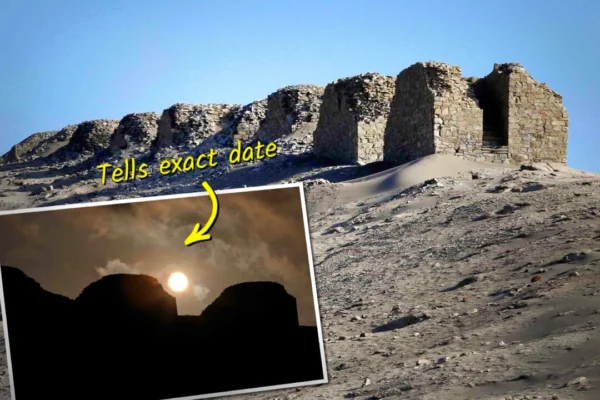Long ago, there were roaming llamas, winding fertile green valleys, and the revered rising sun in this place. When the Inca people arrived at the Casma River Valley, the stone observatory there once measured the passage of time with the sun, appearing like a miracle.
The Casma River Valley served as a fertile haven in harsh climates, snaking through lush coastal Peru, traversing arid deserts and rugged mountains like a slender green ribbon cutting through vast moors.
However, despite the Inca people of Peru having slaves to farm in the bountiful valley that is now in ruins, the sun observatory was not built by them. Located 250 miles north of Lima, there stands a dilapidated structure called Chankillo, which predates Inca imperial rule by over a thousand years, constructed by older civilizations.
Between 300 and 200 BC, the Casma culture built Chankillo near the coast of the Casma Valley. Despite its 2,300-year history, this solar observatory can still accurately track the sun’s path at different times of the year.
This still impressive stone structure is believed to be an ancient calendar.
Its functioning is related to a row of 13 robust stone towers evenly distributed along a ridge, resembling a giant ruler. From a distant position facing east towards the observatory, one can see the sunrise along this row of towers.
When the sunrise aligns between two towers or at a specific point at either end, observers can determine the precise date on the solar calendar. The Casma culture did not use the modern Roman calendar but an older calendar, although both mark the summer and winter solstices.
The observatory also marks the solstices.
Solstices mark the longest and shortest days of the year, signifying the beginning of summer and winter. These days also represent the extreme points of the sun’s path in the sky annually, the furthest north and south. The sunrise on the left side of the observatory, its northern end, signals the start of summer, while the sun rising to its right, towards the southern end, indicates winter’s arrival.
The sunrise at both ends of the observatory marks the solstices, while any point along the ruler made of the 13 towers corresponds to any date within the two six-month periods between them.
Its measurements are accurate to within a day or two. This is not much different from how the Casma culture read it centuries ago. Today, this solar observatory is considered unique and one of the oldest of its kind.
But that’s not all Chankillo has to offer. On a nearby mountain stands another impressive structure: three-tiered walls provide strength, a false entrance deters invaders, and the haphazard bricks within concentric circles are believed to be remnants of a sturdy temple.
“Chankillo is a masterpiece of ancient Peruvians. A masterpiece of architecture, technology, and astronomy,” Peruvian archaeologist Ivan Ghezzi told Agence France-Presse during a visit to the site. “It is the cradle of American astronomy.”
In 2007, Ghezzi and his British colleague Clive Ruggles wrote a research article on Chankillo. They suggested that these towers served as a solar observatory, marking the solstices and possibly aiding ancient peoples in tracking planting and harvest seasons as well as religious holidays.
For a long time, modern farmers in the Casma River Valley and along the fertile coastal lands (making Peru one of the world’s largest avocado producers) have sought to expand cultivation to the lands where these archaeological sites are located.
In 2020, with the outbreak of COVID, archaeologists abandoned many sites in Peru. It was reported that farmers took advantage of this situation to plant crops within the boundaries of Chankillo.
Since the start of the pandemic, UNESCO has closed off dozens of historical sites, including Chankillo and various others around the world.
In 2021, Chankillo, along with Thailand’s Kaeng Krachan Forest and China’s ancient Quanzhou Port, were declared off-limits and designated UNESCO World Heritage Sites. This was reportedly done to protect the remaining parts and prevent encroachment by farmers and looters.
In 2009, another ancient site in Peru was protected when the Americas’ oldest city, Caral, and its six pyramids were named a World Heritage Site. Looking back decades ago, the famous and towering Machu Picchu citadel high in the Peruvian mountains has been protected since 1983.
The original article titled “Ancient Humans Built Observatory in Desert 2,300 Years Ago That Tells Exact Date Using Sun—But How?” was published on the English edition of the Epoch Times website.

